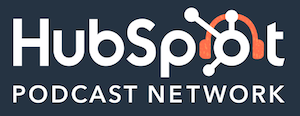Unveiling The Mystery Of Effective Selling written by John Jantsch read more at Duct Tape Marketing
Marketing Podcast with David Newman
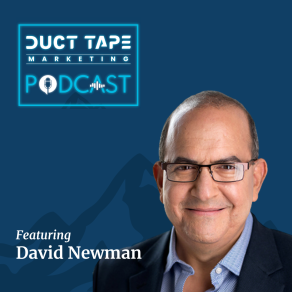 In this episode of the Duct Tape Marketing Podcast, I interview David Newman. He’s the founder of the Do It! MBA mentoring program and the host of The Selling Show, a top-rated business podcast. He is the author of the business bestseller Do It! Marketing, and his new book, Do It! Selling, where David helps professional services sellers land better clients, bigger deals, and higher fees.
In this episode of the Duct Tape Marketing Podcast, I interview David Newman. He’s the founder of the Do It! MBA mentoring program and the host of The Selling Show, a top-rated business podcast. He is the author of the business bestseller Do It! Marketing, and his new book, Do It! Selling, where David helps professional services sellers land better clients, bigger deals, and higher fees.
![]()
![]()
Key Takeaway:
Successful selling requires reframing sales as an invitation, and a conversation with an approach to authenticity, curiosity, and service. David Newman joins me to talk about the frameworks needed to generate more effective selling. This requires developing skills of being strategically dumb and perpetually curious, digging deeper into the problem. David emphasizes the importance of focusing on the prospect’s needs and cultivating a mindset of curiosity.
Questions I ask David Newman:
- [01:51] Why do you think many people despise the word selling?
- [02:59] Why do you suppose that selling is considered the hardest work for most people?
- [05:07] Are there certain skills traits, and personality traits that make somebody better than somebody else at selling?
- [07:28] How do you break down the set journey or stages of selling?
- [10:22] Based on the training that people have received over the years for good or bad; things like overcoming objectives or closing problems, do they still have a place in Do It! Selling?
- [15:15] How do you teach people to overcome that fear of price? which is a fear of rejection.
- [17:40] Are there unique aspects for professional services sellers?
- [21:31] How do I go out there and start kind of knocking on doors without cold calling? How do I start building some opportunities?
More About David Newman:
- https://doitmarketing.com
- Pre-order: Do It! Selling
More About The Agency Certification Intensive Training:
- Learn more about the Agency Certification Intensive Training here
Take The Marketing Assessment:
- Marketingassessment.co
Like this show? Click on over and give us a review on iTunes, please!
John Jantsch (00:00): This episode of the Duct Tape Marketing Podcast is brought to you by Creative Elements hosted by Jay Klaus. It’s brought to you by the HubSpot Podcast Network. The audio destination for business professionals creative elements goes behind the scenes with today’s top creators. Through narrative interviews, Jay Klaus explores how creators like Tim Urban James Clear, Tory Dunlap and Cody Sanchez are building their audiences today. By learning how these creators make a living with their art and creativity, creative elements helps you gain the tools and confidence to do the same. In a recent episode, they talked with Kevin Perry about how he goes viral on every single platform. Listen to creative elements wherever you get your podcast.
(00:52): Hello and welcome to another episode of the Duct Tape Marketing Podcast. This is John Jantsch, and my guest today is David Newman. He is the author of the business best seller, doit Marketing and his new book, doit Selling. He’s the founder of the Doit MBA Mentoring program and the host of the Selling show, a top-rated business podcast with over 300 episodes, I think I maybe even was on once. It helps professionals
David Newman (01:28): Hey John. Thank you. It’s great to be here.
John Jantsch (01:30): So the name of your new book, Do it! Selling: 77 Instant Action Ideas to Land Better Clients, bigger Deals and Hire Fees. So when people hear the word selling
David Newman (02:02): I think it’s two things. I think it’s the way that we have been sold to mm-hmm
John Jantsch (02:50):
David Newman (03:06): I think they’re looking at it as different than the delivery work. So as, let’s say you’re an accountant and you love accounting, you’re a consultant and you love consulting, you’re a coach and you love coaching. If you look at the diagnostic process, once a client hands you a check, once a client hands you a credit card, you’re asking all kinds of questions, you’re digging, you’re probing, you’re uncovering, you really want to help them. Imagine if we just reframed the sales conversation as you’re very first delivery conversation. So there’s no pressure, there’s nothing to hide, there’s nothing to prove, and you’re just having a human to human conversation about their situation and seeing if you can help them or not. So part of that also is our mindset that we cannot go after prospects like a hungry dog going after a piece of meat
(04:07): We have to remain detached. And I like to reframe, and this is in the do it selling book. One of the first chapters is about reframing the word sales with two other words, invitation and conversation. And most people like invitations cuz usually there’s a party of some kind or bourbon or cookies or barbecue or something fun. And most people are also not afraid of a conversation. So a conversation is where you get to make new friends a conversation is where you get to learn things. A conversation is where you get to exchange ideas. If we reframed the sales process and each sales conversation as simply an invitation to a conversation, I think it would be a get a lot easier. And I think folks would realize they’re probably better at it than they think.
John Jantsch (04:54): Yeah, yeah. I think you’re absolutely right. Most, if most people realize that’s what it was,
David Newman (05:15): Sure. Well, I think it’s not personality traits because someone argue, oh, you’re a born salesperson, John, you’re just great at sales and you somehow have the sales gene, or you had sales DNA from the time you were a small little tiny baby
(06:08): And start asking questions from that place of being strategically dumb and perpetually curious. Perpetually curious by the way, means never take the first answer at face value. Mm-hmm
John Jantsch (07:00): Let’s, let’s talk a little bit about stages of selling. You know, it’s just like a, any kind of customer journey. You know, people’s questions and objectives, you know, change in each other’s stages. So like prospecting, you know, is a common thing. I mean, we sometimes have to go out there and find people who might wanna listen to us, right? And then obviously the conversation can change to like, how’s this gonna work for me? All the way through the, well maybe before that trust building
David Newman (07:34): Well, so the demarcation, and I’m sure you get this question a lot of course as well, it’s like, well when does marketing stop? Yes. And when does selling begin? And certainly for independent professionals, that is a very, it’s a very smooth continuum. So you might think that you’re in a marketing conversation, but you’re actually in the sales conversation. If they express interest, if they have urgency, if they have really desire to fix this problem, sometimes you’re in a sales conversation and it turns out, you know what, they don’t have a need, they don’t have an urgency and it’s just a nice marketing conversation. That person may or may not come back later. But I look at the demarcation point, marketing is everything that happens to get the initial face-to-face, zoom to zoom, voice to voice conversation. Once you’re in that conversation, that literally is the beginning of the sales process.
(08:28): And depending on what we’re selling and how complicated it is or how expensive it is, you might be able to have a one or two call sales process. There might be five steps, six steps, seven steps. We sort of lay this out in the book that somewhere between three and seven steps or three and seven touchpoints is most of the sales conversations that folks that we work with end up with. We’re not selling satellites, we’re not selling complicated manufacturing. Technology is no such thing as a six month or a 12 month sales process for small and solo business owners. It’s just a question of can we get the information and can we share the information to build a level of certainty with that prospect that we can really solve their problem? And that starts with understanding and that starts with listening. And that starts with really probing and questioning to a deep level.
(09:22): I think a lot of folks make the mistake with sales conversations first. Sales conversations specifically. They keep it too polite, they keep it too surface level and then they leave it sort of open-ended saying, well great talking to you John, and you know, you know, call me back if you’ve made a decision or let me know when you’re ready. And they just circle off into the sunset, never to be heard from again. So I think having some discipline and having some linkages in that sales process, because as salespeople, when we put our salesperson hat on, it’s really a leadership role. So we need to set the guardrails and the boundaries of how this sales conversation is gonna go and one of the the key principles that will help people right away, never leave one sales conversation without booking the next sales conversation on the prospect’s calendar so that you’re always getting forward momentum.
John Jantsch (10:20): So you talked a little bit about the training that people have received over the years for good or bad. I mean things like overcoming objectives, closing, you know, or kind of common things that are taught in this. Do they still have a place into Do it! Selling?
David Newman (10:36): Well, so let me answer both the way that we have the sales conversation. There’s a sales conversation roadmap that’s in the book. It’s really meant to prevent objections in the first place. Usually an objection is some sort of surprise. So
John Jantsch (10:51): People say, I don’t have enough info. Yeah,
David Newman (10:53): Yeah, exactly. And they think that when they have a closing problem, it’s something that they screwed up at the end. Usually it’s something they’ve screwed up at the beginning or maybe in the middle. But if you’re not closing enough sales, you’re probably not opening the relationship the right way. You’re not having the initial sales conversations that would really diffuse and, and almost melt away all the typical sales objections. No time, no money, gotta check with my boss, gotta check with my wife. It’s not in the budget. We’re already using someone else. I mean, these are all the standard objections. If we’re asking questions about these things early and often, we will surface these obstacles and we’ll be much more prepared to discuss them and dissolve them as the sales process moves forward. As far as closing, I think a really human to human sales conversation leads to the prospect closing themselves, right?
(11:52): So here are the closing questions that are at the back of the book. And these are, I think our listeners will find these so tricky and so manipulative and so difficult. Here they are.
(12:40): Why? Because they’re a natural extension of everything that has come before. So if we learn to have really strong opening sales conversations, surface the issues, get to the question behind the question, the issue behind the issue, the obstacle behind the obstacle, and then it comes time to, hey, we’ve had the value conversation before, the price conversation. I know what I’m solving, I know what I’m fixing, I know what I’m getting and I know what the investment’s gonna be. Would you like to move forward? Does this sound like something you’d like to do? Where would you like to go from here? These are all closing questions that let the fish jump into the boat.
John Jantsch (13:19): Hey, marketing agency owners, you know, I can teach you the keys to doubling your business in just 90 days or your money back. Sound interesting? All you have to do is license our three step process. It. It’s going to allow you to make your competitors irrelevant, charge a premium for your services and scale perhaps without adding overhead. And here’s the best part. You can license this entire system for your agency by simply participating in an upcoming agency certification intensive look, why create the wheel? Use a set of tools that took us over 20 years to create. And you can have ’em today. Check it out at dtm.world/certification. That’s DTM world slash certification.
(14:05): And now word from our sponsor. Are you ready to get out of spreadsheets? Look with HubSpot crm, get realtime data at your fingertips so your teams stay in sync across the customer journey. Build better content, generate more conversions, and get the context you need to create amazing experiences for your teams and your customers at scale. All from one powerful platform. That’s why more than 150,000 companies already use HubSpot’s CRM to run their businesses better. Plus, HubSpot’s user-friendly interface sets you up for success from day one. So you can spend less time managing software and more time on what matters your customers. There’s no better time to organized. Get started for free @hubspot.com today.
(14:56): So you mentioned price. That’s clearly an area that people get very nervous about a lot of times when they get asked that. In fact, I, you know, I work with a lot of professionals, consultants and it’s the area that trips ’em up the most. I mean they’ve, you know, I urge them to double their fees
David Newman (15:33): Yes, absolutely. So I totally agree with you. Just like you, I encourage everyone listening to double your prices right now.
(16:26): Yep. And almost without fail, they start telling me a story. Oh my gosh, I was talking to this company last year and I lost the deal and I went back to the buyer cuz we had a good relationship. And I said, what was up with that? Like what, you know, what decision criteria made you choose someone else? And the buyer says, well, you know, the price was just so low, it made us nervous. It made the c e o nervous, it made the team nervous it, it made me nervous that I really didn’t think you could solve my problem. And there’s always a story like that. So literally when you price yourself out of one market, or the common objection that we hear is, well my clients would never pay that
John Jantsch (17:12): Yeah, 100%. I mean it is, I, you know, I’ve seen it time and time again where somebody, they, it’s almost like what you described, like the person thought it was too cheap, it couldn’t possibly get the result, but you also just, you know, you double your fees and you just, you’re gonna have different, you’re gonna have conversations with different people and that’s, you know, that’s the real key. So, but it’s hard, you know, you’re thinking, can I take $10 today before I get the $20? You know, so it, it keeps people trapped it, you work with a lot of professional services folks. Are there unique aspects of, you know, that type of sale that you think need to exist where they might need not need to exist in a, what I would call a more transactional sale?
David Newman (17:57): Yes, absolutely. Well I think most trusted advisors, unlike selling widgets or unlike selling products, we are the product. Yeah. So we take the sales process and we take rejection very personally.
(18:54): Now they’re a consultant and it’s like, John, I’m selling myself. It’s completely different what happened? Like I didn’t know this was gonna be different. And it’s completely different because we are now selling a personal transformation where the client wants to go from situation A to situation B. They want to either fix the problem or achieve a new higher level outcome. And we are the bridge, right? We are the conduit, we are the catalyst from where they are to where they want to go. That’s why, for example, all of the things that you teach about, you know what? You’re not the celebrity. The system is the celebrity. The methodology is proven and it works. And that’s why, you know, that’s why that level of certainty, cuz people really want two things at the end of the day, prospects, they want to know that you have a system, that you’re not winging it, you’re not making this up as you go along.
(19:48): And they want certainty that they will get to the outcome that you’re being hired for. So if you can anchor yourself in asking questions and having conversations about what they really want, what they’re trying to fix, what they’re trying to solve, and what are the radiant consequences. So the consequences of the consequences. What if you get this right? What if you get this wrong? Sometimes I’ll even, and this is also in the book as far as the detective questions and the go negative questions. What if you don’t do anything? What if this just continues going the way it’s going for the next six months? Uh, and at any point in a calendar year, you can also ask a prospect, well I’m curious if you look back over the last 12 months, what if your next 12 months looked exactly like your last 12 months with this problem, with this situation? Oh my god, that’s unacceptable. No, we have to fix this. So we’re uncovering just by questioning, we’re uncovering urgency and priority and the values through which they’re gonna make this buying decision. And you absolutely have to do that. Otherwise, you know, we’re pitching instead of asking and listening and so many times with a professional services sale, we actually listen our way into the sale. We do not talk ourselves into a sale.
John Jantsch (21:03): Yeah. I can’t tell you how many times the best question you can ask is, tell me more about that.
David Newman (21:08): Yeah,
John Jantsch (21:08):
David Newman (21:43): Yeah, so fantastic question and I do wanna address this issue of cold email, cold LinkedIn, cold calling. There’s a huge difference between cold outreach versus initial conversation. People equate those two things where they will say, well John, I don’t like marketing because I really hate cold calls. It’s like there’s a million other things that you could be and should be doing besides randomly cold calling strangers. But let’s talk about initial outreach. What makes initial outreach immediately warm, even if the person’s never heard of you and there’s no preexisting relationship. It is three things. Number one, research. Literally spending 15 minutes researching that prospect, researching their company, going on LinkedIn, going on their website, going to their media page, seeing the press releases, seeing what they’re up again, seeing what they’re working on. So that’s the research and then coming on their radar with something that is immediately relevant to what’s happening today.
(22:41): So research and relevance takes cold outreach and makes it warm. So if someone were to, let’s say someone, and we get this on LinkedIn all the time cuz LinkedIn’s become a horrible vortex of spam. But let’s say out of my LinkedIn messages, I get the following, Hey David, I see that you’ve written two previous books and your brand new book Do it selling just came out. We’re an A and I’m totally making this up. You know, we’re an Amazon sales agency and we make sure that established authors who are launching a book get a really strong foothold with their initial book sales. Would that be worth a chat? That’s the message. So now I both, we’ve met both criteria. They’ve done their research on me. It only takes about 10 minutes to find that out about me or John or a, any one of your prospects, right? They’ve done the research, Hey, I see that you’re doing this right now at this moment in time. And then I’m not pushing myself on them. I’m simply asking, would that be worth a short chat? Now in my situation, and I think every author that’s launching a new book, I would talk to that person. Yeah. Is a cold call or is that intelligent prospecting? Right? Right. It’s intelligent prospecting because of the research and the relevance.
John Jantsch (23:52): Yeah. And you know, it’s quite obvious when somebody is, you know, attempting to do those things, but they’re, you know, completely inauthentic in doing it. So you know, everybody’s gotten the message, you know, oh, personalize it. But you can see when it’s done cut and paste style, you know, as opposed to taking the time. And it really, you know, as you mentioned, LinkedIn particularly has become so, so bad. I can’t remember the last time I actually accepted an invitation to connect, you know, because of how poor they were. But it’s easy to stand out there now because there’s so much garbage.
David Newman (24:26):
John Jantsch (24:51): Yeah, yeah. Makes ton of sense. I mean, we wanna buy from people that we can develop a relationship. We can like, so tell people where they can find out. I know the book is available, going to be available anywhere you buy books, but where would you like to send people to get more information? I know you have some resources too that, uh, that they can acquire. Yes. Basically to connect with you as well.
David Newman (25:10): Absolutely. So doit selling.com is the global headquarters of the Duet Selling Empire. You can grab the book, like John said, you can download some companion resources, tools, video training that will help you implement the ideas in the book. And everything is waiting for you @doitselling.com.
John Jantsch (25:31): Awesome. Well, David, it was always a pleasure to have you drop by the Duct Tape Marketing Podcast and hopefully we will run into you soon, one of these days out there on the road.
David Newman (25:40): I appreciate you, my friend. Thanks for having me on.
John Jantsch (25:42): Hey, and one final thing before you go. You know how I talk about marketing strategy, strategy before tactics? Well, sometimes it can be hard to understand where you stand in that, what needs to be done with regard to creating a marketing strategy. So we created a free tool for you. It’s called the Marketing Strategy Assessment. You can find it @marketingassessment.co not.com. Co. check out our free marketing assessment and learn where you are with your strategy today. That’s just marketing assessment.co. I’d love to chat with you about the results that you get.
Sign up to receive email updates
Enter your name and email address below and I’ll send you periodic updates about the podcast.
This episode of the Duct Tape Marketing Podcast is brought to you by the HubSpot Podcast Network.
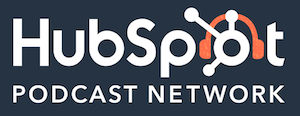
HubSpot Podcast Network is the audio destination for business professionals who seek the best education and inspiration on how to grow a business.
Did you miss our previous article…
https://www.sydneysocialmediaservices.com/?p=5564

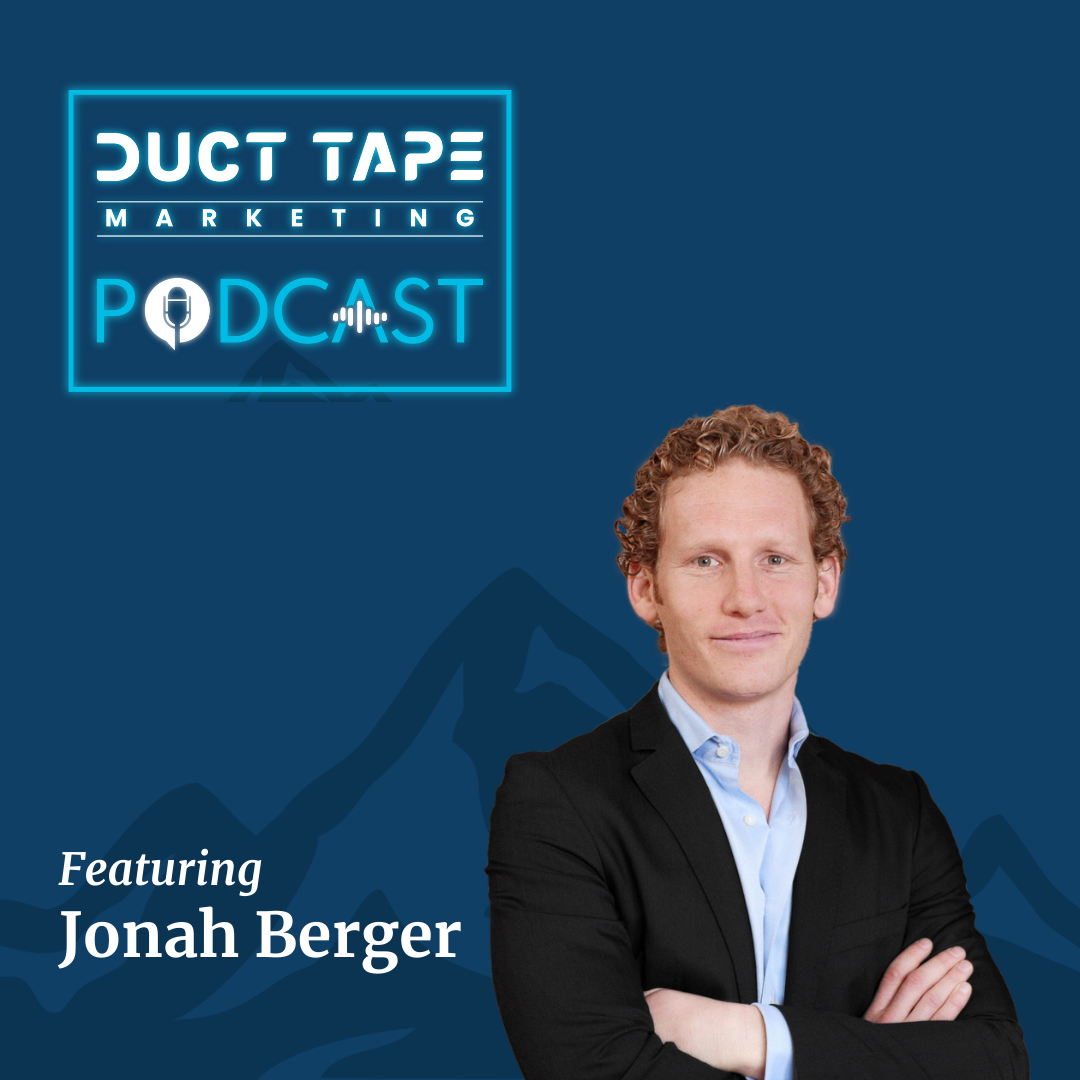 In this episode of the Duct Tape Marketing Podcast, I interview Jonah Berger. Jonah
In this episode of the Duct Tape Marketing Podcast, I interview Jonah Berger. Jonah 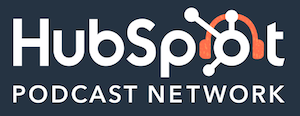
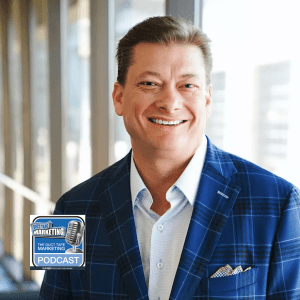 In this episode of the Duct Tape Marketing Podcast, I interview Jeb Blount. Jeb
In this episode of the Duct Tape Marketing Podcast, I interview Jeb Blount. Jeb 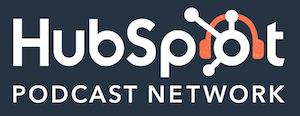
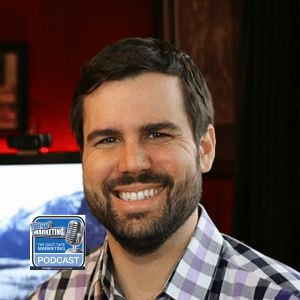 In this episode of the Duct Tape
In this episode of the Duct Tape 